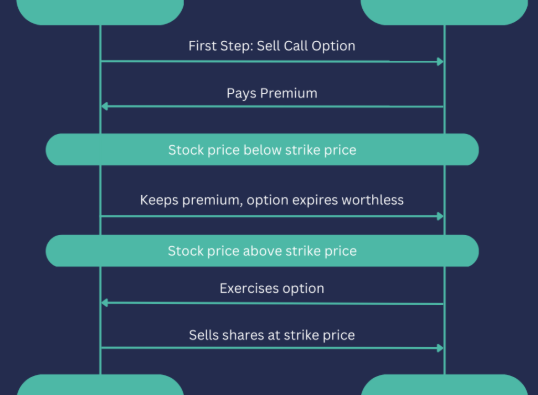
Value investing continues to be a time-tested strategy for those looking to build long-term wealth through disciplined, research-driven stock selection. In today’s fast-paced financial environment, understanding the principles behind this method can offer investors a reliable path to success despite market uncertainties. This guide explores key aspects of value investing, including its core principles, how to apply them, and potential risks to be aware of.
Understanding the Essence of Value Investing
Value investing is a strategy where investors look for stocks that appear to be undervalued in the market. These are companies whose current share prices do not fully reflect their intrinsic worth, often due to temporary issues or market overreactions. The goal is to invest in fundamentally sound businesses that are trading at a discount and then hold them until the market corrects the mispricing.
This approach, championed by Benjamin Graham and refined by Warren Buffett, encourages investors to look beyond short-term market sentiment and instead focus on the long-term potential of a company.
Why Value Investing Still Matters in 2025
With the rise of algorithmic trading and volatile market conditions influenced by global events, many traditional investment strategies are constantly being tested. However, value investing remains relevant because it relies on thorough analysis and long-term thinking rather than speculation or trend-following.
The 2025 market climate presents fresh challenges and opportunities. Rapid technological change, shifts in consumer behavior, and geopolitical uncertainty all make it more important than ever to understand a company’s fundamentals before making an investment decision.
Core Principles of Value Investing
Value investing revolves around several foundational principles:
- Intrinsic Value Focus: Determine the real worth of a company by evaluating its earnings potential, asset base, and market position.
- Margin of Safety: Purchase stocks at a price significantly below their intrinsic value to provide a cushion against errors in judgment or unexpected market downturns.
- Long-Term Outlook: Instead of reacting to short-term news or market volatility, value investors maintain a patient, long-term perspective.
- Independent Thinking: Often going against the herd, value investors are willing to buy when others are selling, as long as the underlying business is solid.
- Quality over Hype: Preference is given to companies with strong management, durable competitive advantages, and consistent cash flow rather than chasing short-term fads.
Elements of a Value Investment Approach
A comprehensive value investing strategy includes several key components:
- Detailed Financial Analysis: Scrutinizing a company’s financial health through its income statement, balance sheet, and cash flow.
- Valuation Ratios: Utilizing metrics such as P/E (price-to-earnings), P/B (price-to-book), and ROE (return on equity) to assess a stock’s value.
- Market and Industry Insights: Understanding the dynamics of the industry in which the company operates, including growth prospects and competitive threats.
- Risk Evaluation: Identifying possible threats to a company’s future earnings or operations and factoring those into investment decisions.
- Diversification: Spreading investments across different sectors or asset classes to minimize risk without compromising potential returns.
Real-World Examples of Value Frameworks
To better illustrate how value investing works in practice, consider two common frameworks:
- The Triple Bottom Line: A model that evaluates business performance based on social, environmental, and financial outcomes. Companies that succeed across all three dimensions often demonstrate long-term value and resilience.
- Maslow’s Hierarchy Applied to Business: Understanding customer or employee motivations can enhance a company’s offerings and workplace culture. Companies that invest in meeting both basic and higher-level needs are more likely to retain talent and foster customer loyalty—both of which support long-term growth.
Why Patience Pays Off
Value investing is not about timing the market or making quick gains. It requires the discipline to wait for the right opportunity and the conviction to stay invested even during periods of market turbulence. Over time, the true worth of quality companies becomes recognized, rewarding those who stay the course with superior returns.
Risks and Considerations
Despite its strengths, value investing is not without challenges:
- Volatile Markets: Holding onto undervalued stocks can be stressful during market dips, especially if recovery takes time.
- Value Traps: Not all low-priced stocks are good investments. Some may be cheap for valid reasons, such as declining industry relevance or internal inefficiencies.
- Sector Concentration: Value stocks often cluster in specific sectors like finance or manufacturing, which can limit diversification.
- Delayed Payoffs: Sometimes it may take years before a stock appreciates, testing the patience and resolve of even experienced investors.
Applying Fundamental Analysis Effectively
At the heart of value investing lies fundamental analysis. This involves looking closely at a company’s financial performance, management strength, market position, and growth outlook. Key financial ratios and industry comparisons help investors judge whether a stock is trading below its fair value.
Evaluating qualitative aspects—like leadership quality and brand reputation—can also offer insight into a company’s resilience and future performance.
Building a Solid Value Portfolio
A well-constructed value portfolio doesn’t just include a handful of bargain stocks. It involves a strategic blend of companies from different industries, geographies, and stages of growth. Including alternative investments such as real estate or commodities can also provide balance and shield against sector-specific risks.
The aim is to combine quality with value, ensuring each asset plays a meaningful role in long-term capital growth while managing downside exposure.
Frequently Asked Questions
What are the key elements of value investing?
The core elements include intrinsic value assessment, margin of safety, focus on fundamentals, and a long-term view.
How can a beginner evaluate if a stock is undervalued?
Look at valuation metrics like the P/E and P/B ratios, compare them with industry averages, and study the company’s earnings and future prospects.
Is value investing suitable for today’s market?
Yes. In uncertain or volatile conditions, value investing offers a disciplined, research-backed approach to identifying quality stocks with upside potential.
What’s a common mistake in value investing?
Confusing cheap stocks with undervalued ones. Not every low-priced stock is a good deal; some may have deep-rooted problems that hinder future growth.
How do you become a successful value investor?
Study the principles, develop analytical skills, and maintain emotional discipline. Learn from experienced investors and stay consistent with your investment thesis.
Final Thoughts
Value investing remains one of the most effective investment strategies for those who prefer substance over speculation. In 2025, as market conditions shift and new challenges arise, the ability to identify solid businesses trading below their intrinsic value will continue to offer opportunities for meaningful long-term gains.
Success in value investing comes not from chasing trends, but from applying sound judgment, thorough research, and the patience to allow investments to grow. For those willing to embrace its principles, value investing provides a dependable framework for wealth creation in any market environment.









